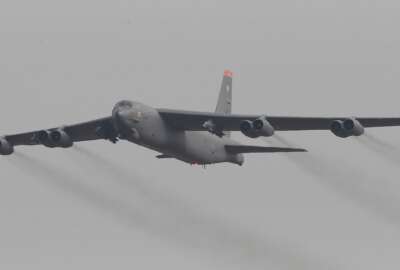
DoD’s fuzzy math could hurt its future budgets
The Defense Department builds economic assumptions and cost savings into its budget, but when those savings are too optimistic it hurts critical programs.
Fuzzy math by Defense Department budgeteers could cause problems for the Pentagon’s fiscal 2017 budget, and create even bigger impacts on future financial plans.
Defense experts and the Congressional Budget Office warn that DoD’s optimistic budget efficiency savings and rosy future years defense plan (FYDP) estimates could have the department playing catch up at the end of 2017 and facing a much bigger budget gap in later years.
The main causes of possible budget inconsistencies for 2017 are the result economic and savings assumptions.

Todd Harrison a senior fellow at the Center for Strategic and International Studies, said every Defense budget has to make certain assumptions about the future. Those assumptions come in the form of the rate of inflation to the price of oil to foreign currency exchange rates.
“As economic conditions change, you may need to go back and revise those economic assumptions,” Harrison said. “Now the question though is how aggressive are you in setting those economic assumptions? In other words, are you going to bet on inflation staying very low, oil prices staying very low and the U.S. dollar staying very strong in the future? If you bet very aggressively, you can generate a lot of savings in your budget and then spend that money on other programs.”
In addition to economic assumptions, DoD also builds efficiency or savings assumptions into its budget.
“The efficiencies are efforts to revise the way DoD does business to save money, while still providing the same level of defense services, and they build them in the budget to try and stretch Defense dollars,” said Bob Hale former DoD comptroller and now a fellow with Booz Allen Hamilton. “There are many kinds of them, but the ones that have been most successful in the past are things like closing unneeded facilities using [base realignment and closure] authorities.”
DoD has built-in savings in the 2017 budget around military health care reform, another round of BRAC, acquisition reform and eliminating lower priority service contracts, Hale said.
Hale said those savings range from $1 billion or $2 billion for military health care and compensation reform to hundreds of millions of dollars in service contract elimination.
The way the assumptions and efficiencies work is that they are added into the 2017 budget, so DoD is acting like it’s already saved that money when it makes its plans for the year.
By banking on those savings, DoD can make plans to use them for other programs, which is great when the assumptions are correct.
But if DoD’s numbers are wrong, it can put a kink in the department’s plans.
“If they don’t achieve these, what the department has to do is make changes in lower priority programs to absorb the savings, they may have to cut back on travel, frequently they’ll delay facilities sustainment and restoration efforts to kind of make ends meet when these efficiencies aren’t approved,” Hale said. “Because they don’t tend to be huge percentages of the budget, they’re usually a few percent, it’s something the department can accommodate. But, it’s accommodated at the expense of things like maintaining our bases, so that’s not good.”
It’s true that the assumptions only make up a small amount of the budget. Katherine Blakeley, a research fellow at the Center for Strategic and Budgetary Assessments, said the 2017 budget assumes $2.8 billion in fuel savings and $2.4 billion in inflation savings.
“Analysts expect the current glut of oil and softening of demand to continue for the next several years, keeping prices low. Even if fuel prices go up substantially and unexpectedly, it wouldn’t necessarily be that difficult for DoD to handle it,” Blakeley said. “Inflation, because it touches all of the Pentagon’s spending, and cost growth in general, are much more serious potential issues. In particular, acquisition costs, operation and support costs, and health care costs have all grown faster than inflation, and faster than DoD has budgeted for in the past.”
If you add a billion or two for health care and compensation reform and a few hundred million for service contract cuts, it still only makes up a small amount of the budget. But it’s still a lot of money to make up if DoD is wrong.
Lately, DoD has been too optimistic in its efficiencies and assumptions, experts said.
One major part of that is some of the assumptions are completely contingent on Congress. If Congress is unable to pass a bill on health care reform or compensation reform, that’s $1 billion the DoD planned on having that it needs to cut out of its budget.
Of course, DoD is to blame too. A 2014 Government Accountability Office report found DoD lacked “a systematic basis for evaluating whether its various initiatives have improved the efficiency or effectiveness of its programs or activities.”
A more recent GAO study from 2015 found DoD did not meet the savings required by law in the civilian personnel reductions and DoD was unable to outline a plan for achieving the savings.
“There’s a subjective component to this in how much do you think you’ll really save? How aggressive do you want to be? Do you want to be very optimistic about the savings or do you want to be more conservative about the savings? There is a bit of a fudge factor there in how likely it is to achieve all these savings based on what they assume,” Harrison said.
Hale said DoD put savings in the budget that may not come to fruition at all, like health care and compensation reform.
“It’s not clear Congress will have time to work through the complexities of the military health system and come up with a reform proposal, so it’s not so much that they overestimate savings, although that does occur, [it’s that] Congress simply doesn’t approve the proposal,” Hale said.
Still, Hale said DoD should continue to try to estimate and find efficiencies because the department owes it to the public to stretch defense dollars wherever it can. Hale said the public has a right to do that when DoD is requesting more than half a trillion dollars.
“This is important, you’ve got to keep trying, but you’ve got to be realistic,” Hale said.
While DoD may have to play catch up at the end of each fiscal year due to efficiency and economic assumptions, the department’s cost estimates are causing a longer term problem.
A Feb. 24 presentation by the Congressional Budget Office stated DoD’s cost estimates for its FYDP may be a good deal higher than expected.
In the 2016 FYDP, DoD expects its costs from 2017 to 2020 will exceed the sequestration caps by a total of $107 billion. That’s a big problem for Congress because it needs to come to a deal that can accommodate that money or cut the defense budget.
The CBO presentation stated acquisition for major programs and operation and maintenance costs may end up costing more than DoD is estimating.
“During the past several decades, the costs of developing and procuring new weapons systems have averaged 20 percent to 30 percent more than DoD’s initial estimates,” the presentation stated.
If that trend continues, along with the optimistic economic and savings assumptions, DoD’s budget for 2017 to 2020 could exceed the sequestration caps by $162 billion.
That puts even more pressure on Congress to get rid of sequestration or watch as DoD is forced to cut more from its budget.
Copyright © 2025 Federal News Network. All rights reserved. This website is not intended for users located within the European Economic Area.
Scott Maucione is a defense reporter for Federal News Network and reports on human capital, workforce and the Defense Department at-large.
Follow @smaucioneWFED




